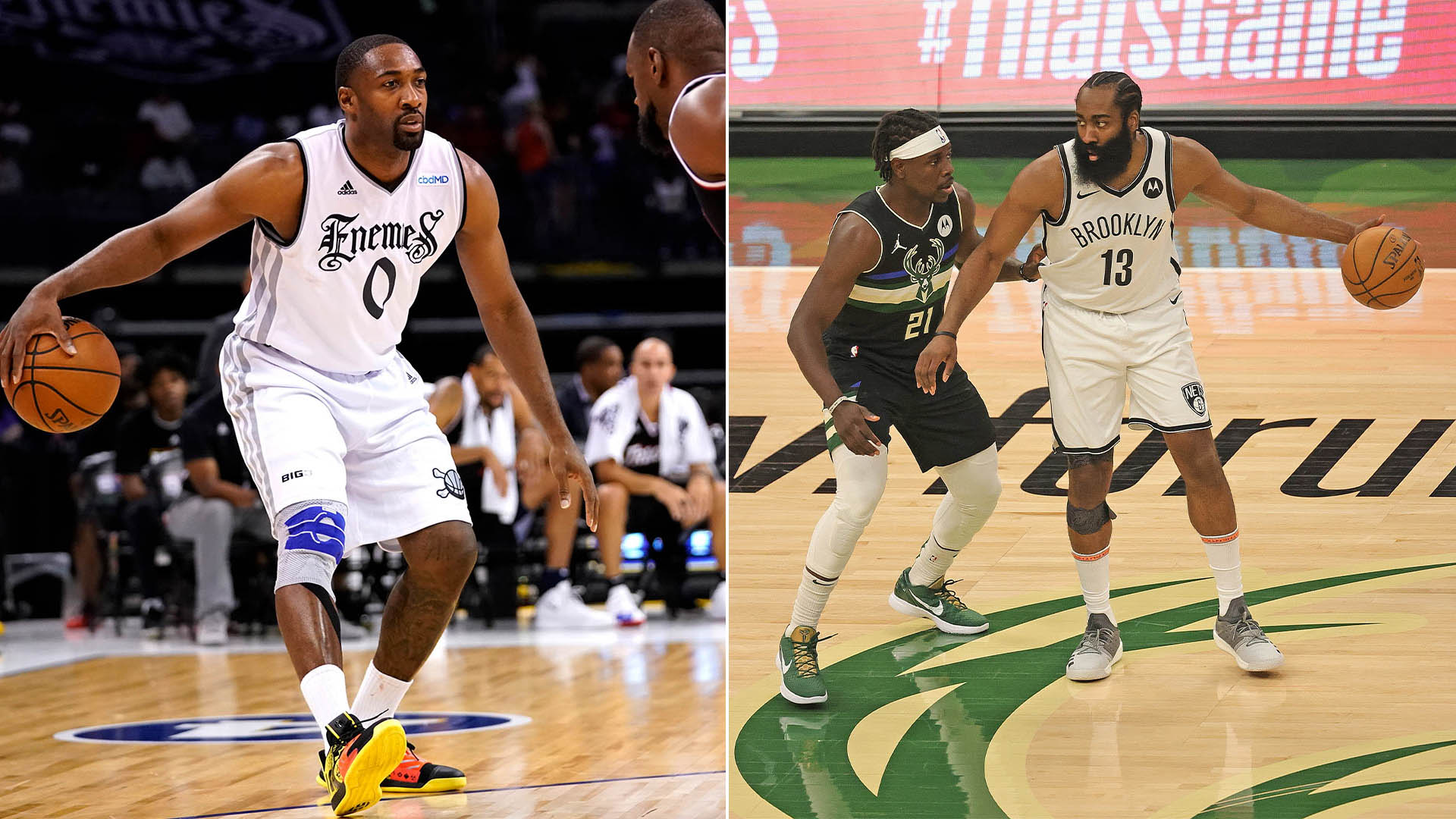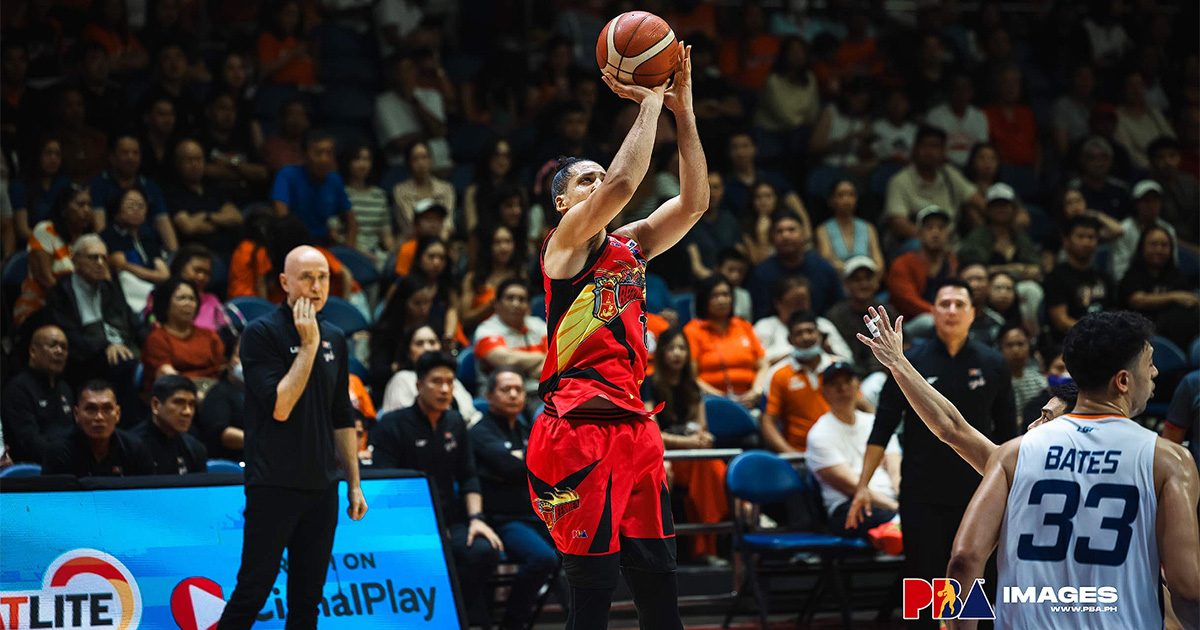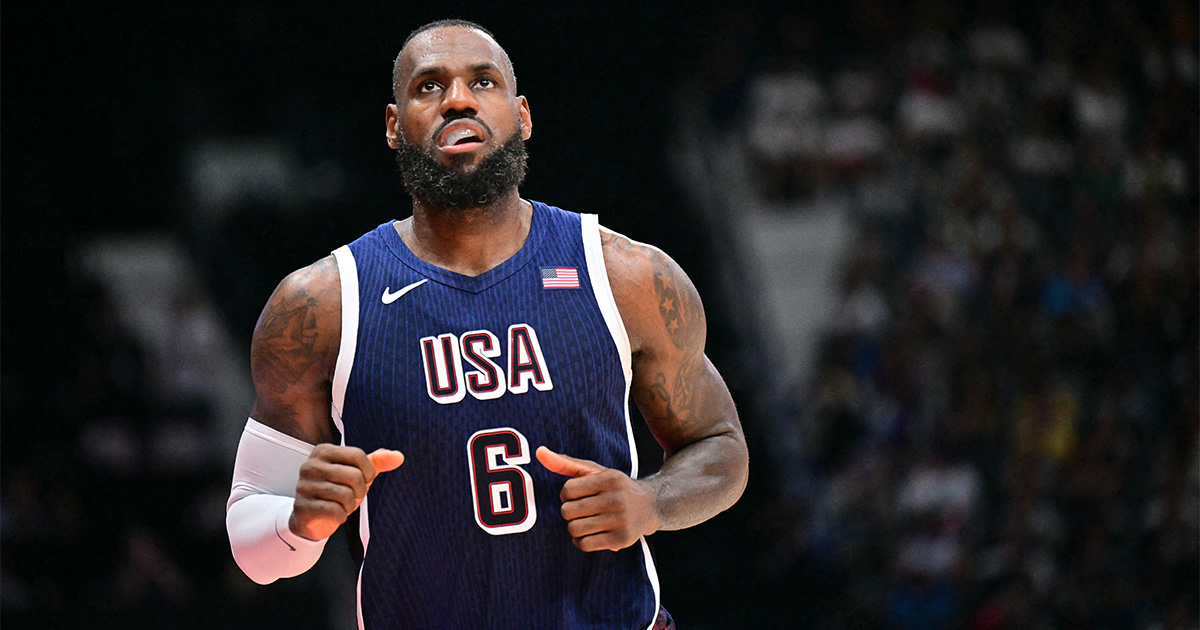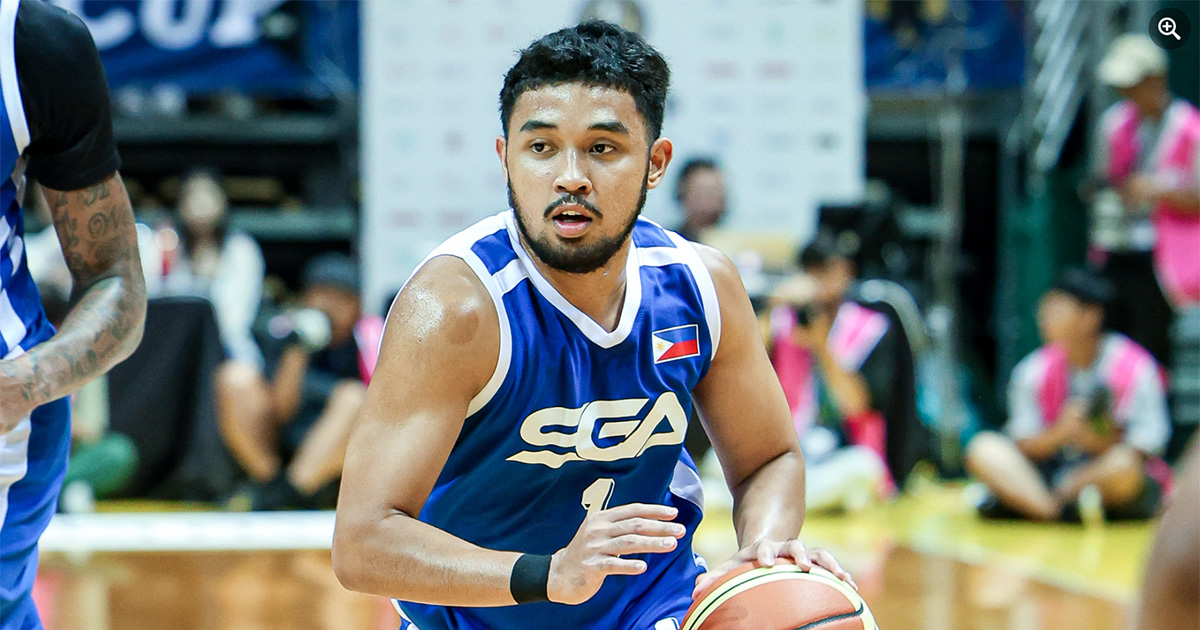The NBA is a much different game now compared to what many of us grew up watching in the 1990s and early 2000s—faster paced, 3-point-oriented, less physical. Modern superstars like Steph Curry, LeBron James, and Kevin Durant have redefined what is possible on the basketball court. But have you ever had a sense of déjà vu while watching them play? That somehow you’ve seen flashes of them before?
I decided to come up with a team consisting of the players we’re reminded of. Most of the guys on the list do not have the same quality as today’s stars and the analogies are on a purely superficial, stylistic level. Some made All-Star teams, but for one reason or another—be it injuries or questionable work ethic—they couldn’t quite get everything together for a Hall of Fame-worthy career. And that’s the only rule in this All-Prototype Team: only players who are not in the NBA wing of the Naismith Hall will be considered.
THE STARTERS
Mahmoud Abdul-Rauf: The Zen Master’s Steph
Five years ago, Phil Jackson stirred up Twitterverse with this:
It came off the heels of Steph Curry’s 46-point, game-winning effort against OKC, so perhaps it was ill-timed. But the Twitter mob and media casuals were unable to grasp the nuance between “remind” and a straight-up “comparison,” so Jackson had to clarify that he was talking about their style of play and not their impact on the game.
If only these keyboard warriors spent their time typing “Mahmoud Abdul-Rauf/Chris Jackson” on YouTube instead of their contrived Twitter outrage, then they’d have found this:
—which was similar to the shot Steph hit against OKC, but on the other side (and deeper). And this:
Abdul-Rauf’s off-the-dribble threes is the main thing that catches the eyes, but there’s a certain swag in some of his passes that are very reminiscent of what we see from Steph. As to why the Jackson brought up Abdul-Rauf, it probably had something to do with this game, one of the 10 the Bulls lost in the 1995-96 regular season:
And while Abdul-Rauf’s NBA career was not as successful as Steph’s, his college career while playing for a blue chip program at LSU was arguably better.

Gilbert Arenas: Hibachi! Harden
In a Reddit AMA last year, Gilbert Arenas compared his game to James Harden:
He didn’t get annihilated on social media as Phil was, probably because millennials and zoomers caught a glimpse of Agent Zero while he was playing in the mid-2000s. Or maybe they were just scared of what he brought to the locker. Either way, the comparison was pretty apt. Arenas was a high usage, triple-threat scorer with handles that can put defenders on ice skates, deceptively athletic, and an expert at fishing fouls (top 10 in free throw attempts from 2004 to 2007).
Arenas mentioned that his game “was in the lines of James Harden without the evolution of the great scoring he’s been doing.” Their age-25 seasons reveal as much:
Arenas (2006-07): 28.4 points/6.0 assists/4.6 rebounds/24.0 PER/9.7 FTA
Harden (2014-15): 27.4 points/7.0 assists/5.7 rebounds/26.7 PER/10.2 FTA
Unfortunately for Arenas, he would suffer a career-altering knee injury towards the end of the 2007 season, which denied him the opportunity to evolve.
In lieu of Harden’s trademark beard, Gil had his trademark phrase: Hibachi!
Billy Owens: King James’ Predecessor
One of the best random gifts I received from my mom was the NBA Panini sticker book for the 1995-96 season. I must have told her I wanted it after I saw an ad in a comic book or magazine, which she then secretly ordered by mail (which she never does). By the time it arrived, I had already forgotten about it, so it came as a total surprise. The book had profiles of all NBA players in that season and one of the things I distinctly remember was Billy Owens’s, which said he “could do a little bit of everything.” Exactly how LeBron James has described himself on multiple occasions.
Owens was a 6’8” superstar at Syracuse who could “bring the ball up the court, pass with precision, shoot with some range — the 3-point line wasn’t instituted until he was a senior — and dismantle teams inside on defense or offense,” according to Jake Adams of The Sentinel. Listen to Doug Collins and Hubie Brown break down his game and Craig Sager interview Owens on draft night:
He was compared to Magic Johnson out of college but was projected to be a better scorer after he averaged 23.3 points in his junior year (first player during the Jim Boeheim era at Syracuse to average over 20; better than the 22.2 that Carmelo Anthony posted in his freshman year). It never quite translated in the pros as people expected and his lasting memory in the minds of NBA fans is being the guy who broke up Run TMC.
While Owens was unable to do those bits of everything as good as LeBron, his passing was at least on par:

Jonathan Bender: OG Slim Reaper
A 6’11” tweener who plays like a shooting guard. The kid who broke Michael Jordan’s scoring record at the McDonald’s High School All-American Game. Jay Bilas described him as “every bit 6-11 and he is long,” “a wonderful athlete that can stroke it from beyond the 3-point line, and can really run the floor, and “has a nice touch and has shotblocking ability.” You’d be forgiven if you thought we’re talking about KD, but it’s actually JB, Jonathan Bender.
Bender was drafted 5th in the 1999 NBA Draft by the Raptors but was traded to the Pacers in exchange for Antonio Davis. As is wont to happen with high lottery prospects that start their careers with contenders, Bender got buried at the end of the bench and his appearances were limited to garbage time.
While he showed flashes of brilliance, injuries prevented him from reaching his full potential, retiring at the age of 25 before attempting a brief comeback and finally calling it quits at 29.
Arvydas Sabonis: Old Man Joker
What if Arvydas Sabonis came to the NBA during his prime? He joined Portland as a 31-year-old rookie, already slowed down by age and various injuries, no longer the same guy who dominated David Robinson in the 1988 Olympics. It turns out, the answer isn’t all that difficult to imagine: just watch Nikola Jokic.
This may seem like a bit of a cheat, but Sabonis was voted to the Hall of Fame by the international committee, not the NBA. So picking him here is fair game. The version of Sabas we got in the NBA was an unathletic but high basketball IQ center, an excellent post player who can put the ball on the floor, had 3-point range and eyes at the back of his head.
If Sabas hadn’t injured his knees during his time with the Soviet Union, then he could have even been Jokic on steroids. A scary thought. You know what’s not scary? More of Sabonis Blazers highlights where he looks like a cuddly polar bear on the floor.
THE RESERVES
Stephon Marbury: Uncle Drew’s Uncle
Handles? Check.
Buckets? Check.
Beef with a co-star of the franchise that drafted him? Check.
Weird-ass sh*t? Check.
Kevin Johnson: Russ Zer0.1
Point guards used to play below the rim—and that applied even to big guards like Oscar Robertson (who never dunked in an NBA game) and Magic Johnson (who 2K Sports will not allow to dunk in a video game). KJ was an athletic and explosive point guard who changed the game with his devil-may-care drives to the basket and in-your-face finishes over 7-footers:
Although he had a scorer’s mentality, he averaged double-digit assists for 4 consecutive seasons from 1988 to 1992. Like Russ, he wasn’t a threat from the outside (never shot better than 23% from deep in each of his first 8 seasons) and his style of play lent to high turnovers (led the league once and was in the top 10 three other times). He wasn’t the rebounder that Russ is, but KJ was one of the better rebounding point guards of his era prior to Charles Barkley’s arrival in Phoenix.

Toni Kukoc: Lefty Luka
Already covered it here. Sam Smith thinks so too. Let’s have some more Toni Magic:
Larry Johnson: Zion’s Grandmama
In terms of physical build, Hornets-era Larry Johnson and Zion Williamson are cut from the same cloth. Both are undersized power forwards who can jump out of the gym.
LJ was defined by his athleticism and although he did plenty of things well apart from scoring (averaged 9.2 rebounds and 4.1 assists while in Charlotte), his physical gifts unlocked everything. Which is a bit of a concern for Zion because LJ’s productivity nosedived after a back injury robbed him of his athleticism, though LJ did have that controversial 4-point play to sink the Pacers in the 1999 East Finals to remember him by.
Derrick Coleman: Pre-KAT
John Calipari never coached Derrick Coleman—Coach Cal missed DC by a year with the Nets and returned to the college ranks in 2000 a year before DC had his second stint with the Sixers. Yet for some reason, the great Kentucky bigs of the last decade were seemingly molded after DC. DeMarcus Cousins, Anthony Davis, and Karl Anthony-Towns can all post up, put the ball on the floor, pass, and shoot the 3. What distinguishes the Kentucky guys from other modern stretch bigs is that, like DC, they’re not afraid bang bodies in the low block.
DC didn’t quite have AD’s defensive impact, while injuries have altered Cousins’s career, so we’ll settle with the KAT comp here.
Anthony Mason: The Draymond Concept
Not all prototypes are inferior to the final model. Many car manufacturers showcase concept cars that feature cutting-edge designs and technologies, but the production models end up as toned-down versions. That’s the same for the final guy on the list, the late Anthony Mason.
He was best known as a bruiser together with Charles Oakley in the Riley-era Knicks. A versatile defender who can guard anyone from Michael Jordan:
To Hakeem Olajuwon:
He evolved into a point forward for the Hornets and the Heat where he basically did Draymond things without the benefit of playing with the Splash Brothers and KD.
And James Worthy thinks Draymond wouldn’t last 20 minutes on the court with him.
***
Send your mailbag questions to [email protected].
















moviesbox.net/movies